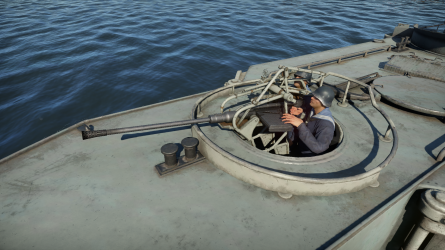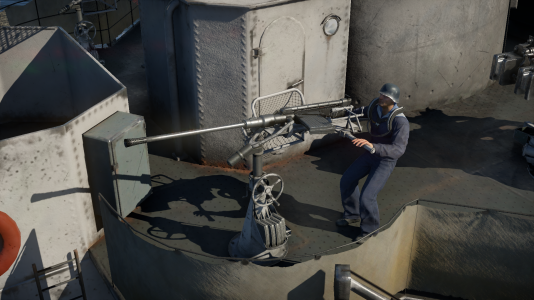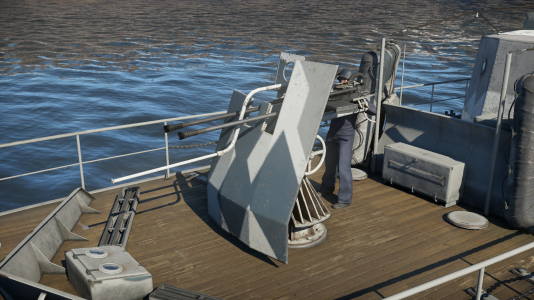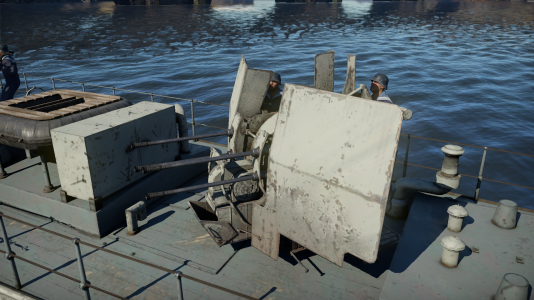Difference between revisions of "2 cm/65 C/38 (20 mm)"
(→Vehicles equipped with this weapon) |
Indo_Pilot (talk | contribs) (→Vehicles equipped with this weapon: Added Marceau) |
||
| Line 26: | Line 26: | ||
{{Navigation-Line|'''Frigates'''}}{{Specs-Link|germ_kanonenboot_k2}} | {{Navigation-Line|'''Frigates'''}}{{Specs-Link|germ_kanonenboot_k2}} | ||
| − | {{Navigation-Line|'''Destroyers'''}}{{Specs-Link|germ_destroyer_class1924_leopard1932}}{{-}}{{Specs-Link|germ_destroyer_class1924_iltis}} | + | {{Navigation-Line|'''Destroyers'''}}{{Specs-Link|germ_destroyer_class1924_leopard1932}}{{-}}{{Specs-Link|germ_destroyer_class1924_iltis}}{{-}}{{Specs-Link|germ_destroyer_class1939_t22}}{{-}}{{Specs-Link|germ_destroyer_class1939_t31}} |
{{Navigation-Line|}}{{Specs-Link|germ_destroyer_class1934a_1940}}{{-}}{{Specs-Link|germ_destroyer_class1934a_1944}}{{-}}{{Specs-Link|germ_destroyer_class1936_z20_karlgalster}}{{-}}{{Specs-Link|germ_destroyer_class1936_z20}}{{-}}{{Specs-Link|germ_destroyer_class1936a_z25}}{{-}}{{Specs-Link|germ_destroyer_class1936a_mob_z32}}{{-}}{{Specs-Link|germ_destroyer_class1936b}}{{-}}{{Specs-Link|germ_destroyer_class1936c_z46}}{{-}}{{Specs-Link|germ_destroyer_class1936c_z47}} | {{Navigation-Line|}}{{Specs-Link|germ_destroyer_class1934a_1940}}{{-}}{{Specs-Link|germ_destroyer_class1934a_1944}}{{-}}{{Specs-Link|germ_destroyer_class1936_z20_karlgalster}}{{-}}{{Specs-Link|germ_destroyer_class1936_z20}}{{-}}{{Specs-Link|germ_destroyer_class1936a_z25}}{{-}}{{Specs-Link|germ_destroyer_class1936a_mob_z32}}{{-}}{{Specs-Link|germ_destroyer_class1936b}}{{-}}{{Specs-Link|germ_destroyer_class1936c_z46}}{{-}}{{Specs-Link|germ_destroyer_class1936c_z47}} | ||
| − | {{Navigation-Line|}}{{Specs-Link| | + | {{Navigation-Line|}}{{Specs-Link|fr_destroyer_marceau_class_marceau}} |
{{Navigation-Line|'''Light cruisers'''}}{{Specs-Link|germ_cruiser_emden_1944}}{{-}}{{Specs-Link|germ_cruiser_leipzig}}{{-}}{{Specs-Link|germ_cruiser_nurnberg}} | {{Navigation-Line|'''Light cruisers'''}}{{Specs-Link|germ_cruiser_emden_1944}}{{-}}{{Specs-Link|germ_cruiser_leipzig}}{{-}}{{Specs-Link|germ_cruiser_nurnberg}} | ||
Revision as of 04:32, 10 August 2023
Contents
Description
The 2 cm/65 C/38 is a German WWII light naval anti-aircraft cannon found on many minesweepers, motor torpedo boats, destroyers, and cruisers in the German naval tech tree. It is an improved version of 2 cm/65 C/30 (20 mm), which can be found on many German naval vessels, often together with the C/38. A twin mount (designated Flakzwilling 38) and a quadruple mount (designated Flakvierling 38) were also developed.
Two army versions, FlaK 38 (20 mm) and KwK38 (20 mm), can be found on some German SPAA and early light tanks, respectively.
Vehicles equipped with this weapon
| Vehicles equipped with this weapon | |
|---|---|
| Motor torpedo boats | R-301 · S-38 · S-38b · S-100 · S-147 · S-204 Lang · S-701 |
| GIS 811 | |
| Motor gun boats | Krischan der Große |
| Motor torpedo gun boats | MZ1 |
| Barges | AF D1 · AF D3 |
| Anti-air ferries | SF40 Heavy · SF40 Light |
| Sub-chasers | M-17 · M-802 |
| Frigates | K2 |
| Destroyers | Leopard · Luchs · T22 · T31 |
| Z12 Erich Giese · Z15 Erich Steinbrinck · Z20 Karl Galster · Z22 Anton Schmitt · Z25 · Z32 · Z43 · Z46 · Z47 | |
| Marceau | |
| Light cruisers | Emden · Leipzig · Nürnberg |
| Heavy cruisers | Admiral Hipper · Prinz Eugen |
| Battlecruisers | Scharnhorst |
General info
The 2 cm/65 C/38 has a barrel diameter of 20 mm, a barrel length of 1.3 m, and weighs 57.5 kg. It has a magazine size of 40 rounds and has a rate of fire of 480 rounds per minute. The Flakzwilling mount has an increased rate of fire of 500 rpm per gun.
Available ammunition
Depending on the vehicle, there are up to three belts available. Note that Default and Universal refer to the same belt, depending on the vehicle.
- Default/Universal: AP-T · AP · HEF-T · HEF
- 20 mm HET magazines: HEF · HEF-T · HEF · AP
- 20 mm APT magazines: AP · AP-T · AP · HEF
| Penetration statistics | |||||||
|---|---|---|---|---|---|---|---|
| Ammunition | Penetration @ 0° Angle of Attack (mm) | ||||||
| 10 m | 100 m | 500 m | 1,000 m | 1,500 m | 2,000 m | ||
| HEF-T | 2 | 2 | 2 | 2 | 2 | 2 | |
| AP | 36 | 35 | 27 | 20 | 15 | 11 | |
| AP-T | 36 | 35 | 27 | 20 | 15 | 11 | |
| HEF | 2 | 2 | 2 | 2 | 2 | 2 | |
| Shell details | ||||||||||||
|---|---|---|---|---|---|---|---|---|---|---|---|---|
| Ammunition | Velocity (m/s) |
Projectile mass (kg) |
Fuse delay (m) |
Fuse sensitivity (mm) |
Explosive mass (TNT equivalent) (g) |
Ricochet | ||||||
| 0% | 50% | 100% | ||||||||||
| HEF-T | 835 | 0.12 | 0 | 0.1 | 10.54 | 79° | 80° | 81° | ||||
| AP | 785 | 0.15 | - | - | - | 47° | 60° | 65° | ||||
| AP-T | 785 | 0.15 | - | - | - | 47° | 60° | 65° | ||||
| HEF | 835 | 0.12 | 0 | 0.1 | 10.54 | 79° | 80° | 81° | ||||
Comparison with analogues
Compared to other 20 mm guns within the German naval tree:
- MG 151/20 (20 mm): MG 151/20 has a larger belt size (600 rounds) and a much greater rate of fire (700 rpm); but it has a weaker AP shell (25 mmm max penetration) with a slower muzzle velocity (705 m/s), and it can overheat if fired for too long.
- 2 cm/65 C/30 (20 mm): The predecessor of C/38, it has a smaller magazine size (20 rounds) and has a lower rate of fire (312 rpm). The same ammunition is used.
Common 20 mm guns in other nations include:
- Oerlikon Mk.II (20 mm): 20 mm Oerlikon Mk.II, and its derivatives, have a larger magazine (60 rounds) and have a greater muzzle velocity (844 m/s); but they have a lower rate of fire (450 rpm), and fire a weaker AP shell (40 mm max penetration) and a weaker HE shell (6.525 g TNT equivalence).
- Type 98 (20 mm): 20 mm Type 98 has a greater muzzle velocity (844 m/s); but has a smaller magazine (20 rounds), has a lower rate of fire (300 rpm), and fires a weaker AP shell (40 mm max penetration) and a weaker HE shell (6.171 kg TNT equivalence).
Usage in battles
The 2 cm/65 C/38 has a very large TNT equivalent explosive mass compared to other guns of similar calibre. While the C/30 can struggle to destroy enemy boats with one magazine, thanks to the increased magazine size, the C/38 has no problems in this aspect. This, combined with the greater rate of fire over the C/30, lets the C/38 be even more effective weapon against enemy boats.
However, the 2 cm/65 C/38 is held back by its effective range of approximately 2 km using the 20 mm HET belt. This can be slightly increased to approximately 2.3 km using the 20 mm APT belt, although even so, hitting moving targets at such ranges can be difficult. Boats armed with 2 cm/65 C/38 should instead aim to close the distance and overwhelm enemy boats with their firepower.
The effective range of the 2 cm/65 C/38 is approximately 2 km with the 20 mm HET belt, though if using the 20 mm APT belt, the effect range can be increased to roughly 2.3 km. Even so, hitting moving targets at such ranges can be difficult because of the relatively low muzzle velocity and the small mass of the rounds. Boats armed with 2 cm/65 C/38 should aim to close the distance where they can overwhelm enemy boats with their firepower.
The primary belt choice for this gun should be the 20 mm HET belt since it contains the highest HE:AP ratio. Several 20 APT belts should also be taken to deal with armoured targets, primarily USSR armoured river patrol boats. For destroyers and cruisers armed with 2 cm/65 C/38, if the option is available, only take 20 mm HET, since the main guns can handle any armoured targets much better.
Pros and cons
Pros:
- Very high explosive mass
- Above average AP penetration
- High rate of fire
Cons:
- Below average muzzle velocity
History
Development began in 1938 for a replacement for the Flak 30, an army version of the 2 cm/65 C/30 after issues arose in its slow rate of fire and small ammunition magazine size. Rheinmetall began production of the new gun, Flak 38, in 1939, with it entering service the same year. In 1940, a naval version, 2 cm/65 C/38, entered production and service in the Kriegsmarine, where it would replace the older 2 cm/65 C/30.
The 2 cm/65 C/38 had the same dimensions as its predecessor, with a bore diameter of 20 mm and a barrel length of 1.3 m, while also managing to be 6.5 kg lighter at 57.7 kg total weight. Like the 2 cm/65 C/30, the gun was fully automatic and recoil-operated, and it fired the same ammunition: a HE round that weighed 0.134 kg and had a muzzle velocity of 835 m/s; and an AP round that weighed 0.148 kg and had a muzzle velocity of 800 m/s. The barrel was also of a monobloc design and could be easily removed and replaced. However, unlike its predecessor, 2 cm/65 C/38 was fed with 40-round magazines, as opposed to the 20-round magazines of the C/30, and had a cyclic rate of fire of 480 rounds per minute and an effective rate of fire of 220 rounds per minute, a noticeable improvement over the 280 rounds per minute cyclic and 120 rounds per minute effective of the C/30.
Available for the gun were three mounts: L/30, L41, LM44U. L/30 was the standard single mount for the 2 cm/65 C/38. It weighed 416 kg with the gun and was manually operated, able to depress -11° and elevate +85°. At its base was a small ammunition storage for up to five magazines, which would be manually loaded by the crew into the left side of the gun. On the right side was a bag which would catch spent casings. L41 was a single mount designed for use in the comparatively confined spaces of S-Boote. It weighed 500 kg, could only depress to -10°, and traversed with the use of a hand crank. LM44U was a special twin mount which weighed 3,600 kg total and was designed to withstand up to 200 m depths for use on submarines. The mount could depress -10° and elevate +78°. It was driven by hydraulic devices and could train at a rate of 30°/s and could elevate at a rate of 30°/s or 60°/s, set by the operator who also fired the guns using two foot pedals, one for each gun.
A highly successful configuration of the 2 cm/65 C/38 was the 2 cm Flakvierling C/38, which consisted of four guns in a quadruple mount, arrange 28 cm apart vertically and 67.4 cm apart horizontally. The Flakvierling C/38 was manually operated with two hand cranks, one for training and one for elevation, by an operator who said directly behind the guns and fired them using two foot pedals. The right-hand side guns were arranged upside-down such that ammunition would be loaded in from the right-hand side. Ammunition was manually loaded into all of the guns from each side by the crew from ammunition racks at the base and spent casings fell down the middle into a receptacle. There were versions produced with and without the gun shield. For the Flakvierling C/38, two mounts were available: L/38 and L38/43. L/38 weighed 2,150 kg with the guns, and it could depress -10° and elevate +90°; L38/43, designed in 1943 and introduced in 1944, was a 3-D stabilized L/38 mount.
The 2 cm/65 C/38 was a highly successful gun and became the standard light anti-aircraft cannon of the Kriegsmarine upon its introduction in 1940, with it being mounted on nearly every ship.
Media
- Images
See also
External links
- [Lone Sentry] 2 cm Flak 38: A.A./A.T. Gun - Originally published as Catalog of Enemy Ordnance Material, United States Office of the Chief of Ordnance, 1945, p. 136
- [NavWeaps] 2 cm/65 (0.79") C/30 and C/38 AA MG
- [Wikipedia] 2 cm Flak 30, Flak 38 and Flakvierling 38
| Germany naval cannons | |
|---|---|
| 15 mm | MG 151 |
| 20 mm | 2 cm/65 C/30 · 2 cm/65 C/38 · 2 cm/65 Flakzwilling 38 · 2 cm/65 Flakvierling 38 · MG 151/20 |
| 30 mm | MK103/38 |
| 37 mm | FlaK-Lafette C/36 · 3.7 cm FlaK-Lafette LM/42 · SK C/30 · FlaK.36 · FlaK43 |
| 40 mm | 40 mm/70 MEL58 · Bofors Flak 28 · Bofors L/70 model 1948 |
| 52 mm | 52 mm/55 SK L/55 |
| 88 mm | 8.8 cm/76 SK C/32 · S.K.C/35 · FlaK.18 · Flak.36 · 88 mm/45 AA SK L/45 · 88 mm/45 casemate SK L/45 |
| 100 mm | 100 mm/55 MLE model 53 |
| 105 mm | SK C/32 · SK C/33 AA |
| 120 mm | L45 |
| 128 mm | 12.8 cm/45 SK C/34 · 12.8 cm SK C/41 |
| 150 mm | 150 mm/45 SK L/45 · 15 cm/48 KC/36 · 15 cm/55 SK C/28 · 15 cm/60 SK C/25 |
| 203 mm | 20.3 cm/60 SK C/34 |
| 283 mm | 283 mm/45 SK L/45 · 283 mm/52 SK C/28 · 283 mm/54,5 SK C/34 |
| 305 mm | 305 mm/50 SK L/50 |
| 380 mm | 38 cm SK L/45 |
| Foreign: | |
| 23 mm | ZU-23 (USSR) |
| 25 mm | 2M-3 (USSR) |
| 30 mm | AK-230 (USSR) |
| 37 mm | V-11 (USSR) |
| 76 mm | 76 mm/62 OTO-Melara Compact (Italy) |
| 100 mm | 100 mm/56 B-34 (USSR) |







